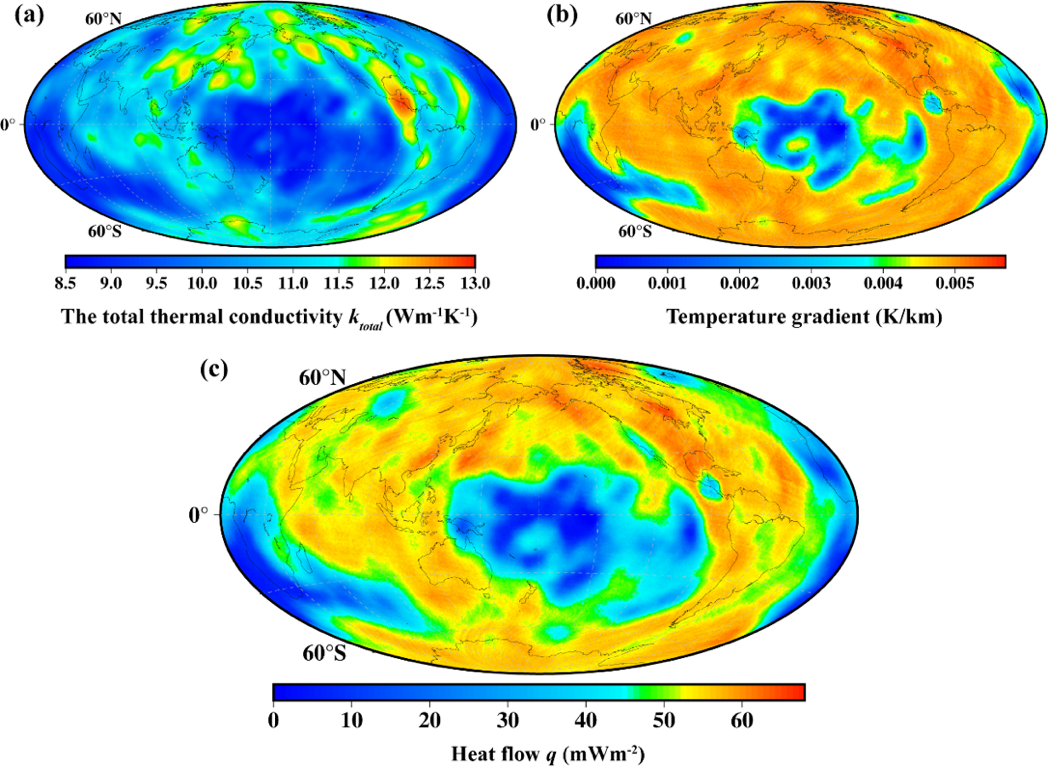A team led by Prof. WU Zhongqing from the University of Science and Technology of China (USTC) of the Chinese Academy of Sciences (CAS) predicted the thermal conductivity of bridgmanite (Brg) and post-perovskite (PPv) at high pressure and temperature using machine learning potential (MLP), subsequently clarified the distribution of heat flow and the magnitude of heat flux at the core-mantle boundary (CMB). Their work was published in Earth and Planetary Science Letters on September 13th.
Heat flow from the core is a fundamental parameter to understand the structure and evolution of the Earth, which is obtained by multiplying the thermal conductivity at the lowermost mantle by the temperature gradient. Measurement of the thermal conductivity of the minerals at high temperature and pressure remains one of the most complicated tasks.
Traditionally, three-order force calculated by first-principles were used to solve the Boltzmann transport equation to obtain the thermal conductivity of the minerals, but higher-order force constants in many systems can’t be ignored. Molecular dynamics methods can implicitly take into account all anharmonic phonon interactions but only large enough simulation systems can produce reliable results. However, first-principles molecular dynamics can only study a small number of atoms due to computational limitations.
To address this problem, the research team developed an efficient computational method for high-temperature and high-pressure thermal conductivity by combining the first-principles calculations with machine learning. Utilizing first-principles data to train machine-learning potential, the team managed to performs molecular dynamics simulations with tens of thousands of atoms while maintaining the accuracy of first-principles. This method efficiently solved the finite-size effect and obtain reliable results on thermal conductivity.
The simulations showed that at the lowermost mantle, 12.5 mol% Fe reduces the thermal conductivities of Brg and PPv by 10% and 14%, respectively, and a phase transition from Brg to PPv increases the thermal conductivity by 20-30%. The team has previously used Monte Carlo method and elasticity model to perform an inversion for the mineral content and temperature distribution of in the lower mantle. Combining with the previous results, the team determined the thermal conductivity and temperature gradient at the CMB, therefore yielding the distribution of heat flow.

The thermal conductivity, temperature gradient and heat flow distribution of the CMB. (Image by WANG Dong et al.)
The high-temperature large low shear velocity province (LLSVP) reduces the thermal conductivity of the minerals in its interior as well as the temperature gradient from the LLSVP to the core, which leads to anisotropy in the heat flow distribution. The heat flux at the CMB obtained from the integration of the heat flow distribution is 7.1 ± 0.5 TW. The team further derived the age of the inner core tobe 0.75 ± 0.35 Ga base on the energy conservation law.
The results obtained from this study, the thermal conductivity of Brg and PPv, the heat flow distribution at the CMB and the magnitude of the heat flux, are of great significance to the understanding of the coupled core-mantle evolution and the operation of geodynamo.
Paper link: https://doi.org/10.1016/j.epsl.2023.118368
(Written by HUANG Rui, edited by ZHANG Yihang, USTC News Center)